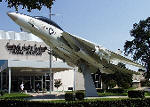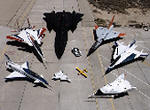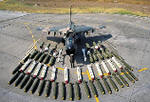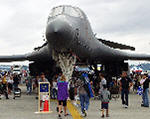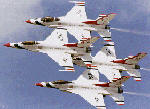
|
Description
| Manufacturer: | Curtiss | |
| Base model: | F-87 | |
| Designation: | XF-87 | |
| Version: | A | |
| Nickname: | Blackhawk | |
| Designation System: | U.S. Air Force | |
| Designation Period: | 1948-Present | |
| Basic role: | Fighter | |
| Status: | Experimental | |
| See Also: | ||
Specifications
| Not Yet Available |
Recent comments by our visitors
| chat cairo, DC | Thank u so much
شات الحب تحميل مهرجانات دردشه الحب ديكورات جديدة دردشه مصريه اغاني سنجل حديثة دردشة الحب رسائل حب شات مصريه تحميل مسلسلات رمضان 2012 شات مصرية يوتيوب دردشة مصر مشاهدة اون لاين دردشه مصرى تحميل افلام عربي دردشة مصرى صور حب دردشه الشله صور رومانسية شات الشله صور الفنانين شات مصرى صور اسلامية شات بنات اخر نكته دردشه مصر مركز رفع الصور دردشة مصرية برامج الكمبيوتر شات مصر ماسنجر دردشة مقياس الحب دردشة نهر الحب ازياء 2012 دردشة بنات لبنان راديو مزيكا دردشه نهر الحب فوتوشوب دردشه بنات لبنان العاب الكمبيوتر شات نهر الحب تعليم الطبخ شات ادما ديكور 2012 شات بنات لبنان ثيمات مسن 2012 فساتين سهره دردشة الحلم العربي mazika زخرفه شات دردشة ادما توبيكات مسن Chat girls مجلة مزيكا رمزيات ماسنجر دردشة بنت السعودية منتدي دردشه بنت السعوديه العاب بنات شات بنت السعوديه زخرفة انجلش دردشة شقاوة شات الحلم العربي تطوير المواقع دردشه شقاوه طبختك دردشه الحلم العربي صور مسن شات شقاوه sitemap زخرفه انجلش rss2 زخارف انجلش مزيكا فساتين سهرة جنان Code of Arab دردشه حبنا صور الفنانين دردشة حبنا بدل رجالي 2012 اضف موقعك دردشه العنابى اغاني شعبي دردشة السعودية اخبار مصر دردشة الشلة زخارف شات بنات السعودية صور حزينة دردشه ادما Romantic Wallpapers شات الثقافة الجنسية شات حبنا دليل بنات مزيكا دردشة بنات مزيكا منتديات بنات مزيكا دردشة العنابى منتدي الصور واللقطات صور رومانسية 2012 فضائح الفنانين صور الفنانين والمشاهير 2012 صور بنات 2012 صور شباب 2012 عالم حواء شات العنابى ازياء 2012 مكياج 2012 حوامل - ازياء حوامل - فساتين حوامل - ملابس حوامل ازياء محجبات - فساتين محجبات - ملابس محجبات - صور ازياء فساتين محجبات 2012 فساتين سهره 2012 فساتين زفاف 2012 - فساتين عرايس - فساتين خطوبة زواج صور حب 2012 صور بنات جميلة 2012 صور بوس ساخنه 2012 06/23/2012 @ 10:37 [ref: 61234] |
| Aaron F. Robinson Wilmington, NC | The Curtiss XP-87 Blackhawk (Model 29A) was Curtiss's first (and only) pure-jet aircraft. It was also the last aircraft to be produced by the Curtiss company, marking an ignominious end for a corporation which had been a household name in the annals of American aviation for so many years.
The Curtiss-Wright Corporation, like all other American aircraft manufacturers, was hit hard by the massive cancellations that took place at the end of World War 2. Unfortunately, Curtiss had no projects that were readily applicable to the postwar civilian market, and none of its military aircraft fit in with postwar planning. Consequently, in 1946 Curtiss-Wright was forced to shut down all of its aircraft manufacturing plants except the government-owned plant in Columbus, Ohio which had been built for it by the Navy for the purpose of SB2C Helldiver production. All units of the Aeroplane Divison of Curtiss-Wright were transferred to Columbus, and Curtiss-Wright valiantly tried to get back into the game. Following the fabulously-successful P-40 series of fighters and the SB2C Helldiver carrier-based dive-bomber, Curtiss had gone through a long series of unsuccessful combat aircraft projects. Notable in this list of failures were the USAAF XP-46, P-60, and XP-62 projects, and the Navy XF14C, XBTC-2, and XBT2C-1 projects, none of which succeeded in attaining quantity production status. Nothing seemed to work for Curtiss; the company seemed to have run out of fresh, new ideas. On March 23, 1945, the USAAF had announced a competition for an all-weather fighter bomber. It was generally pictured as being the successor to the Northrop P-61 Black Widow night fighter, and initially a piston-engined design was considered. However, the era of the piston-engined fighter was clearly at an end, and in December 1945 the requirement was changed to stipulate that the fighter-bomber was to be powered exclusively by jet engines. Bell, Consolidated-Vultee, Douglas, Goodyear, Northrop, and Curtiss-Wright all submitted proposals. The Curtiss-Wright company had earlier submitted a proposal to the Army known by the company as the Model 29. The jet-powered Model 29 had been designed specifically for the attack role, and the Army had been sufficiently impressed that they had ordered two prototypes of the design under the designation XA-43. To meet the jet-powered night fighter requirement, Curtiss proposed an aircraft of a similar configuration, but adapted specifically for the interception role. The company designation of Model 29A was assigned to the project. The Army ordered two prototypes under the designation XP-87 and the name Blackhawk was assigned. The USAAF initially favored the Curtiss proposal, if for no other reason that the Curtiss-Wright factory would probably close down if it did not win the order. In order to free up Curtiss-Wright for the fighter project, the XA-43 project was cancelled on November 21, 1945, and the funds and Army serial numbers were transferred to the XP-87 project. The XP-87 was a large, all-metal, cantilever, mid-wing aircraft, powered by four 3000 lb.st. Westinghouse XJ34-WE-7 turbojets paired in two large pods mounted under the wings. The horizontal tailplane was mounted halfway up the vertical tail. The aircraft was equipped with a twin-track tricycle undercarriage. The pilot and radar operator were seated side-by-side in a large, spacious cockpit. The armament was initially to have been a pair of automatically-operated nose and tail turrets, each containing a pair of 0.50-inch machine guns. In addition, internally-mounted rockets were to have been fitted. However, this was changed before completion to a quartet of 20-mm cannon housed in a nose turret. This nose turret was subcontracted to the Glenn L. Martin Company of Baltimore. The turret was to be a moveable platform which would allow the angle of fire to be varied at will. Firing angles ranging from zero to 90 degrees from the centerline could be achieved. The XP-87 had a gross weight of 49,000 pounds, and was one of the heaviest Curtiss aircraft ever built, exceeded in weight only by some variants of the C-46 Commando series of twin-engined transports. In the immediate post-war period, Curtiss-Wright had only two military designs in contention for production orders--the mixed-power XF15C-1 carrier-based fighter and the XP-87 two-seat night fighter. The XF15C-1 lost out to the Ryan FR-1 Fireball for postwar production orders from the Navy. The Blackhawk was Curtiss-Wright's only hope. The prototype XP-87 (45-59600) was finally ready in early 1948. It was trucked out to Muroc Dry Lake in March of 1948 for its first flight. It took to the air for the first time on March 5, 1948. Initial performance of the XP-87 (redesignated XF-87 in June 1948) was promising, although the top speed was some twelve percent slower than promised and there were some problems with buffeting at high speeds. An order for 57 F-87A fighters and 30 RF-87A photographic reconnaissance aircraft was placed on June 10, 1948. Since the XP-87 had proven to be somewhat underpowered, the production F-87As were to have been powered by two 6000 lb.st. General Electric J47-GE-7 engines. Plans were made for the second XP-87 prototype (46-522) to be fitted with a pair of these J47 turbojets as a production prototype. It was redesignated XP-87A. With the landing of the F-87 contract, it would seem that Curtiss-Wright had finally begun to recover from its postwar doldrums. However, the USAF concluded that the new Northrop XP-89 Scorpion showed much more potential, and the F-87A order was cancelled in its entirety on October 10, 1948. Work on the twin-engined XF-87A version was halted before completion, and the machine was scrapped. The loss of the F-87 contract was devastating for Curtiss-Wright. By this time, the had completely run out of fresh ideas, and had finally reached the end of the line. With no orders forthcoming from the military, and with nothing even remotely promising for the civil market, Curtiss-Wright was forced to shut down its entire Aeroplane Division. All of the Aeroplane Division's assets were soon sold to North American Aviation, and the government-owned plant at Columbus reverted back to the Navy. The Columbus plant sat idle for a couple of years, but was re-opened by North American Aviation in the early 1950s for the production of F-86 Sabres. Specification of the XF-87 Blackhawk: Engines: Four 3000 lb.st. Westinghouse XJ34-WE-7 turbojets. Weights: 25,930 pounds empty, 49,900 pounds gross. Maximum speed: 600 mph at sea level. Climb to 25,000 feet in 13.8 minutes. Service ceiling 41,000 feet. Range 1000 miles. Dimensions: wingspan 60 feet, length 62 feet 10 inches, height 20 feet, wing area 600 square feet. The cannon-armed nose turret was never actually fitted. 11/21/2008 @ 16:28 [ref: 23121] |
| Guy E. Franklin Deatsville, AL | The XF-87 was the last aircraft built by Curtiss Aircraft. The specification originally called for a twin-engine, single-place fighter, which evolved into an attack aircraft (XA-43) and finally to a quad-jet, twin-place, all-weather, high-altitude fighter. Two prototype XF-87s were built (S/N 45-59600 and 46-522), the second of which was modified to the sole XF-87A.
The XF-87 was designed for an innovative nose turret capable of swiveling in a wide arc around the axis of flight; however, the turret was never actually installed on the XF-87. The very large fighter was severely underpowered by four J34 turbojets and was redesigned for two J47 turbojets (XF-87A). A production order for 58 XF-87As and 30 RF-87s was canceled before any aircraft were constructed. Type Number built/ converted Remarks XF-87 2 Last Curtiss aircraft XF-87A 1 (cv) Modified XF-87 F-87A 0 58 canceled RF-87A 0 30 canceled SPECIFICATIONS: Span: 60 ft. 0 in. Length: 62 ft. 0 in. Height: 20 ft. 4 in. Weight: 37,350 lbs. loaded Engines: Four Westinghouse J34-WE-7 turbojets of 3,000 lbs. thrust each Armament: Four 20mm cannon and two .50-cal. machine guns Crew: Two PERFORMANCE: Maximum speed: 520 mph Cruising speed: 450 mph Range: 1,000 miles Service ceiling: 41,000 ft. 01/05/2007 @ 09:34 [ref: 15106] |
| John Stark PhD Vandenberg AFB, CA | Just finished a paper on Largest aircraft companies of
WWII, that did not make any aircraft in production after the war years. The Curtiss company had the most cash money after the war, BUT no contracts after the war. They went into engines, for their business income. The lost of a fine company who did not stay on top to the list. The F-87A was a large drain on the companies money supply, and for reason of we don't care, etc... The F-89, F 94, and F86D did the job at the time... 07/16/2004 @ 17:25 [ref: 7840] |
| John Shaft , MD | The Blackhawk was designed as a twin jet (the jets were
mounted on the inner wings) interceptor and bomber escort. It was armed with 4 20mm cannon but lost funding to superior fighters like the F-89. 04/23/2001 @ 17:58 [ref: 2143] |
Recent photos uploaded by our visitors
